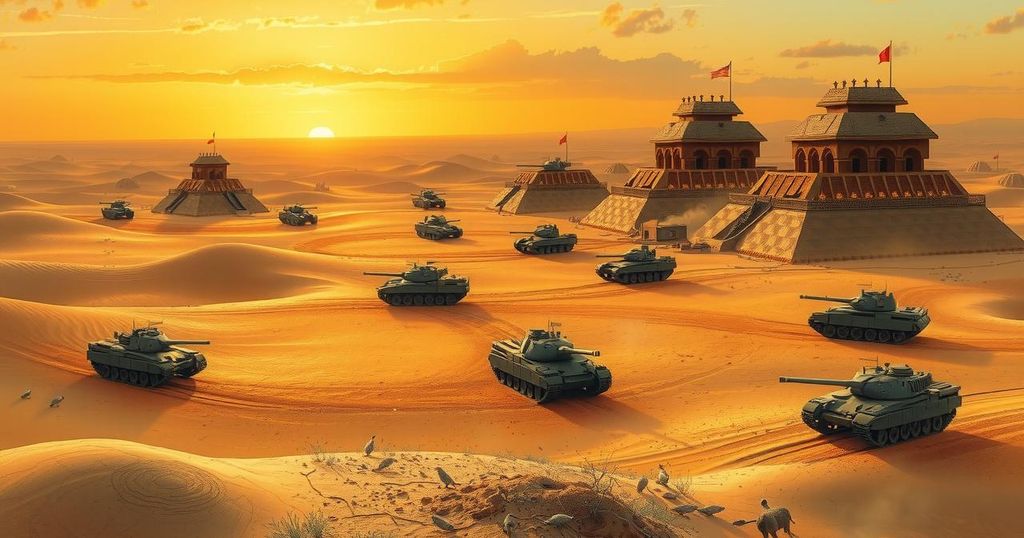Sudan’s Military Achieves Victory Amidst Civil War and Foreign Influence
Sudan’s military captured the presidential palace in Khartoum, marking a significant change in the civil war dynamics. This victory follows substantial support from Russia and Iran, enhancing the army’s capabilities. Meanwhile, the RSF has struggled with overextensions and supply challenges. The conflict has escalated into a humanitarian crisis as civilians face severe repercussions from continued violence and insecurity.
After nearly two years of intense fighting, Sudan’s military has recaptured the presidential palace in Khartoum, marking a significant turning point in the ongoing civil war. Videos emerged showing soldiers exulting in the palace, which bore the scars of conflict. This decisive victory may indicate a shift in military fortunes, as the army appears to regain control after initial setbacks suffered when hostilities erupted in April 2023.
The Sudanese army’s recent successes can be attributed to increased support, including arms and financial aid from allies such as Russia and Iran. Additionally, the military has been bolstered by the formation of new militia forces. In contrast, the Rapid Support Forces (RSF), formerly seen as dominant, have faced logistical challenges and overextended themselves in their territorial hold. The army’s proclamation of intent to continue fighting reflects a renewed determination to prevail in this protracted conflict.
The civil war ignited from a longstanding rivalry between de facto president Gen Abdel Fattah al-Burhan and his deputy Gen Mohamed Hamdan Dagalo, known as Hemedti. This factional struggle has transformed Sudan into a war zone, contributing to what is now a dire humanitarian crisis affecting millions. Various regional powers have engaged in the conflict, pursuing their interests, such as the UAE’s alleged backing of the RSF to control gold-rich regions.
Furthermore, as the Sudanese army sought support from international allies to change the tide of war, ties with Russia, Iran, and other nations were rekindled. Reports indicate that both Moscow and Tehran have supplied military technology and weaponry, including Iranian-crafted drones, to the Sudanese army. The military’s strategy has included significant recruitment efforts to replenish its ranks.
Despite the military’s advancements, the impact of external support should not be overstated. Analysts caution that the army’s mobilization of local militia forces has played a crucial role in their battlefield success. Concurrently, reports of war crimes and humanitarian violations from both factions have created additional suffering for civilians caught in the crossfire.
Local residents like Issra Hassan express grave concerns about daily life amid the chaos. Families in Khartoum live with extreme unpredictability as both sides engage in violent clashes. The pervasive insecurity has led to chaotic recruitment practices, including the enlistment of minors, creating an environment of fear for the population.
In summary, the ongoing civil war in Sudan has shifted significantly with the military’s recent capture of the presidential palace, demonstrating a change in wartime dynamics and military fortunes. Increased support from key allies such as Russia and Iran, alongside improved militia recruitment strategies, has bolstered the army’s position against the RSF. However, the conflict continues to result in severe humanitarian crises and atrocities affecting civilians caught in the violence. The evolving geopolitical interests surrounding this struggle highlight the complexities of modern warfare and its impact on local populations.
Original Source: www.telegraph.co.uk




Post Comment